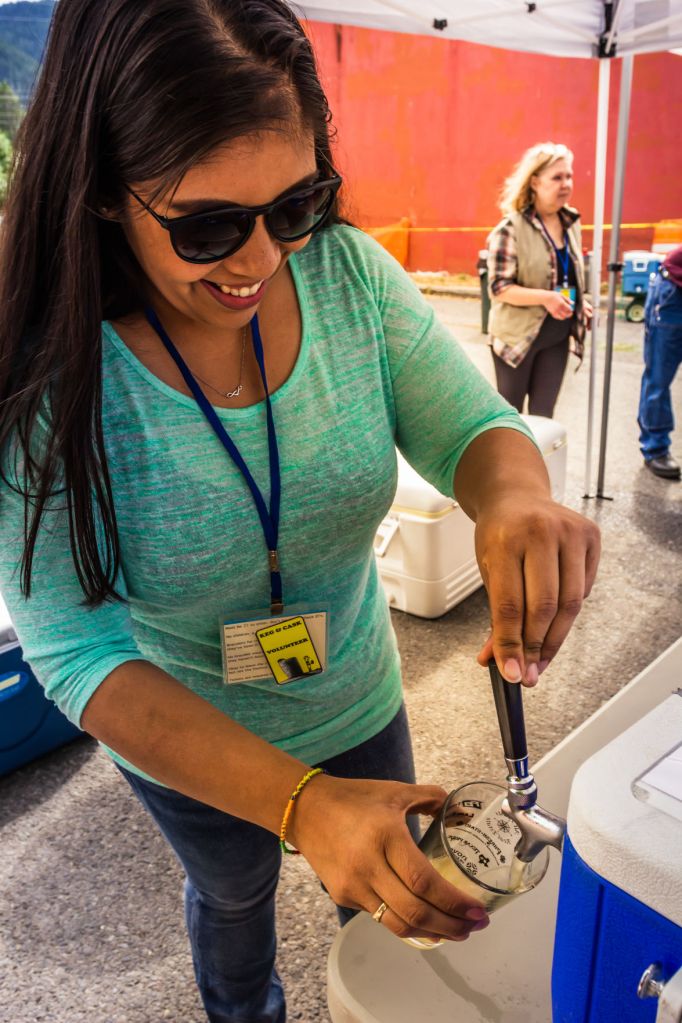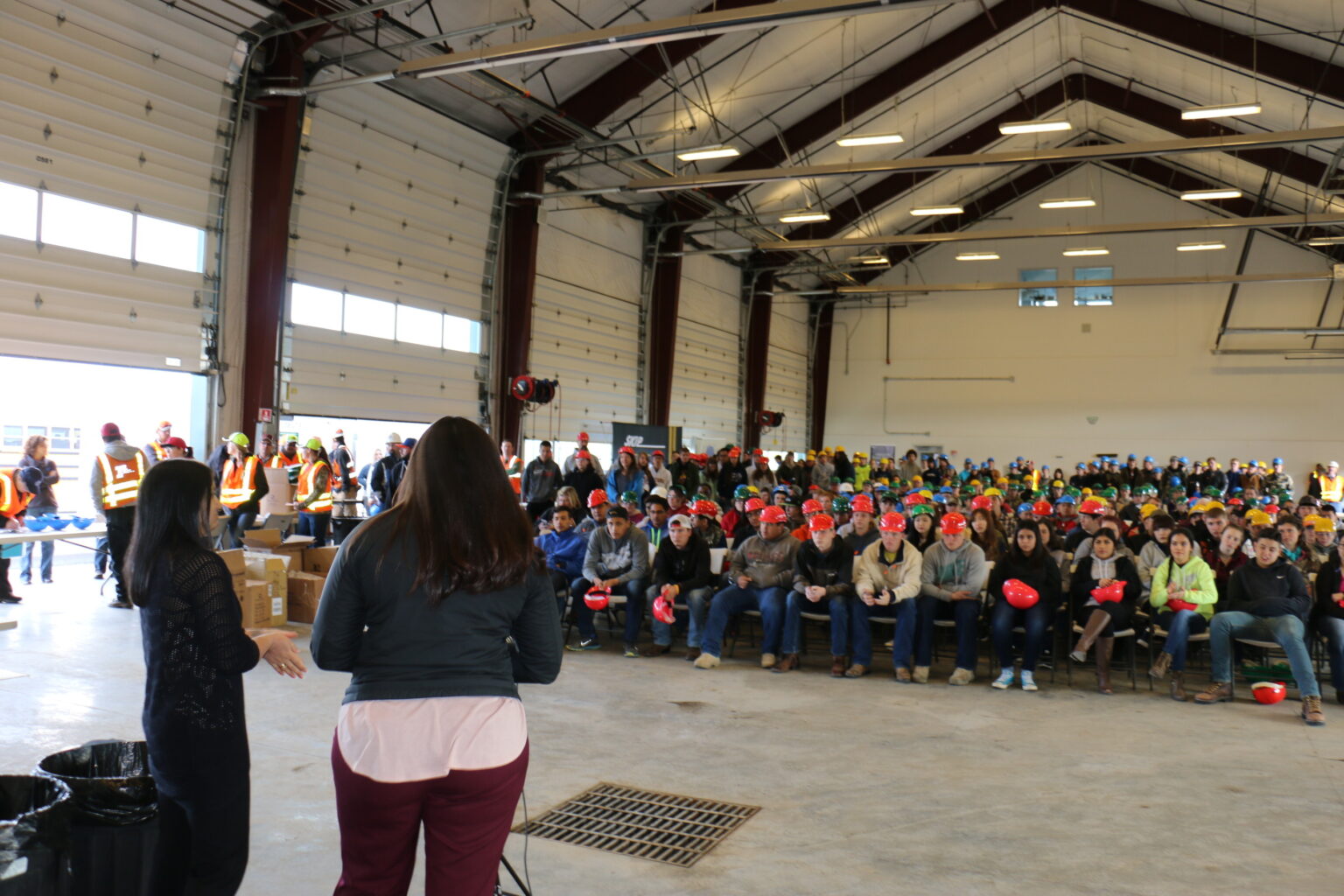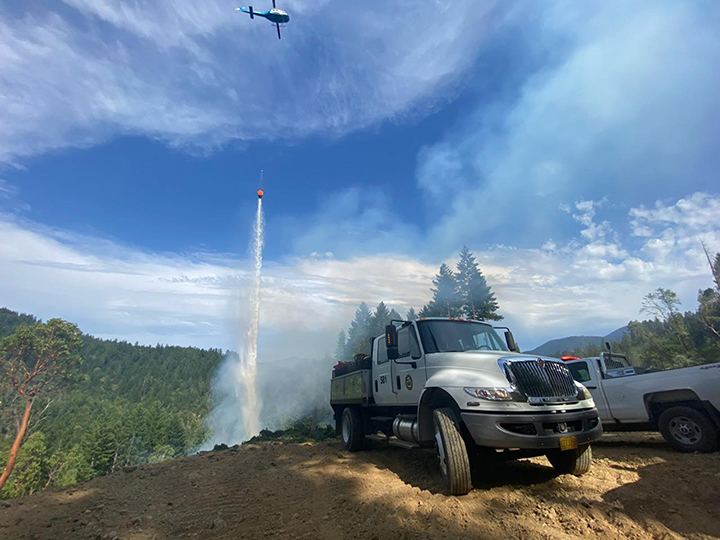Adventures abound in Oakridge and Westfir
Published 12:00 am Thursday, February 6, 2020

- A volunteer pours a cider from the tap at the Oakridge Keg and Cask Festival, Aug. 10, 2019. (Makenzie Whittle/The Bulletin)
The lead singer of Celtic band the Lads of Leisure pointed at our table while brandishing a highlighter green kazoo. A young girl who performed Irish step dances with the band shyly brought a basket of the bright green instruments to the table.
The band struck up soon after, and following the song’s refrain came a chorus of kazoos as the audience hummed along with the band.
It was a particularly stormy day. Clouds and rain settled into the hills and forest surrounding Oakridge’s Brewers Union Local 180 this particular August evening. The gray skies outside along with the pub’s dark wood accents, mismatched tables and chairs, band, chalkboard tap list and glasses of true pints (20 ounces) being served alongside fish and chips could transport anyone to a quaint pub in the English countryside.
But this pub, as authentic as it feels, is still very much rooted in the community of Oakridge.
The small mountain town about 96 miles southwest of Bend over the Willamette Pass, claims a population of 3,280. The city website boasts that the town sits above the fog and below the snow. In fact, locals say the sun shines every day, though for how long is anyone’s guess.
While the weather seems idyllic, in February of this year Oakridge made national headlines when a sudden snowstorm brought down trees and debris over U.S. Highway 58, the main artery through town, and knocked down power lines, leaving the city isolated and in the dark for 14 days. Meanwhile, Oakridge residents banded together to support each other until help arrived.
It took the efforts of 95 linemen — Oakridge’s Lane Electric Cooperative only has a crew of 16 — to restore the power, according to the company website.
That’s not the first time Oakridge and neighboring Westfir have shown resilience to adversity. The towns bounced back from economic uncertainty when their respective mills closed in the 1980s and ’90s by establishing the area as one of the top outdoor destinations in the state and the mountain biking capital of the Northwest.
Both alike in history
Subarus, 4Runners and Sprinter vans have replaced the roaring diesel engines that echoed through town decades ago. The contemporary cars now carry full bike racks caked in mud or dust from the trails that ferried thousands of logs every day in and out of the woods.
Surrounded by the Willamette National Forest, Oakridge and Westfir made their marks by means similar to many Oregon mountain towns — logging.
Westfir started it’s life out as a company town (a self-contained industrial community where the company owns and maintains the land, buildings and services) after Colonel George Kelly of the Western Lumber Company pursued a contract with the U.S. Forest Service to harvest timber estimated at producing around 50 million board feet per year. The catch was that whoever was granted the contract had to create a town.
A year before the deal was signed, Kelly began building and establishing the community and, in 1923, he got his wish.
Westfir became the first company town in Lane County and would be one of 34 total towns of its kind in the state, including Gilchrist, south of Bend.
The mill opened in 1925. Throughout its life, the mill would see production as high as 500,000 board feet of timber per day, then plummet to numbers so low the mill would only operate part time, alerting workers of when to come in the next day by flashing the lights in their homes the night before. Kelly’s company owned everything in town, and ran the power grid, so it could control everyone’s lights.
Boom and bust cycles were common, and the mill and workers powered through new owners, modernization, the addition of plywood production and more to keep things running until 1985 when, after a string of ownership changes, the mill closed and a fire destroyed everything that remained.
Oakridge is the older and larger of the two cities, with settlement beginning in the 1860s. It was known as Big Prairie and Hazeldell before officially becoming Oakridge in 1912.
In 1909, the Southern Pacific Railroad Company began constructing a route over the Cascades from the Willamette Valley to California, leading many workers to settle in Oakridge.
After the railway was connected in 1926, as many as 14 trains would rumble through the forest, dropping passengers off for a day of hiking up to Diamond Peak or Salt Creek Falls — Oregon’s second-tallest waterfall.
The railroad was a vital piece of the community, eventually taking the city’s next main industry, lumber, in and out of the mountains.
The Pope & Talbot sawmill opened in 1948. The mill would continue to grow and thrive through the decades, especially during the post-war years when lumber was needed for the boom in housing and other building projects nationwide. That is until the 1970s, when modernization would cause employment numbers to begin a downward slide until 1985 when Pope & Talbot decided to halt operations.
A group of local workers took it upon themselves to keep the mill running until it was sold to the Bald Knob Land and Timber company in 1989, who would a year later declare bankruptcy, forcing the mill to close once and for all.
Similar to the fate of Westfir’s mill, a fire also took down the majority of the remaining buildings in 1991. Currently, the site is an industrial park owned by Oakridge and is sitting relatively empty except for a mix of rusted outbuildings, a water tower, concrete foundations and weeds.
Sawmills to singletrack
The site of Westfir’s mill sits across the North Middle Fork Willamette River (or North Fork of Middle Fork as maps list it) on the other side of the longest covered bridge in Oregon.
Built in 1944, the red walled Office Bridge sits picturesquely over the river flanked by abundant green shrubs, blackberry bushes and cedars. The old mill site is now The Portal, a park and rest area that’s a starting point for mountain bikers making their way to a few of the many trails that make up the Oakridge-Westfir trail system.
Oakridge received a grant in 2004 to develop a trail plan from the National Park Service Rivers, Trails and Conservation Assistance Program. From that the mountain biking hot spot was born.
Riders can descend steep tracks and curves that make up 350 miles of trails, painstakingly maintained by volunteers from the Disciples of Dirt, the Greater Oakridge Area Trail Stewards (or GOATS) and the Alpine Trail Crew Association.
The sounds of spokes whirring through the forest have replaced those roaring chainsaws of decades ago and marked the most recent change the communities have seen.
The shift to biking tourism helped the cities climb out of the economic depression after the mills shuttered. According to a 2014 study, bikers who come to Oakridge spend on average between $2.35 million and $4.91 million per year on lodging, gas, gear and food.
Not bad for a one-stoplight town.
Eat, drink and be outdoorsy
While biking is a large draw to Oakridge and Westfir, it isn’t the sole reason to visit.
Eight miles east of Oakridge on Highway 58 is McCredie Hot Springs. Bubbling out of the banks of Salt Creek, the hot spring pools are dug out of the mud and surrounded by boulders. It’s a free day-use only and clothing optional site.
Another 10 miles east along the highway is the 286-foot Salt Creek Falls. The water plummets into a shallow pool surrounded by mossy green rocks and hills before flowing into Salt Creek. The observation area is paved and accessible during the spring through the fall, though if trudging through the snow is appealing, parking at the sno-park for a .4 mile walk to the deck is allowed.
Closer to Oakridge are abundant fishing and hiking locations like Salmon Creek, the Middle Fork of the Willamette and Hills Creek Reservoir.
Or for a scenic drive, hit the Aufderheide Scenic Byway from Westfir to McKenzie Bridge. The 60-mile road twists through incredibly dense spots of the Willamette National Forest, canyons, gorges, and along rivers, ending at Cougar Reservoir and Terwilliger Hot Springs. The drive can take from two to four hours to complete depending on stops for hiking or off-highway vehicle excursions. The road is only open seasonally once the snow has cleared the roadway.
Willamette Fish Hatchery, on the outskirts of Oakridge, also has a short interpretive trail highlighting the various flora found within the forests surrounding Oakridge and Westfir. They also have a free educational mini-golf course explaining the life cycle of a salmon, along with a small museum, picnic area and several ponds with rainbow trout and spring Chinook salmon headed to Oregon lakes.
After a day of exploring the area, it may be time for a bite to eat. Oakridge has options to satisfy any taste.
If thirst is the need to be quenched, however, Oakridge’s historic Uptown district has two craft options to wet some whistles.
Deep Woods Distillery features a stuffed crow atop its sign. The building has a large outdoor space dubbed the Insensitive Wetlands. It’s open Fridays and Saturdays with drink specials and live music. In July, the distillery hosted a one-day festival, Deep Woodstock, with eight bands and local artists converging on the space. The distillery offers a selection of whiskey, gin and vodka all made in Oakridge and each with a label designed by a local artist.
A few blocks east down the quiet road is the Brewers’ Union Local 180. A stuffed crow adorns the top of this sign, too, with another one hiding in a corner inside. The space includes three distinct areas (music room, bar and front parlor). Three large trail maps hang on the walls, highlighting Oakridge.
For one day in August, the few blocks between the pub and distillery shut down for one afternoon for the Oakridge Keg & Cask Festival.
This year marked the sixth time Oakridge has celebrated regional beers, ciders, wines, mead and spirits with proceeds of the event going to the town’s food bank and the Uptown Business Revitalization Association’s efforts.
Though considerably smaller than other beer festivals and a bit more rustic, it is no less enthusiastic, with volunteers happily pouring from one of 20 camp coolers rigged with taps to eager drinkers.
Set up with a large stage at one end featuring local bands including this year’s opener, Eugene band Inner Limits (which also features Mountain View graduate Torrey Newhart on keys), people danced or sat grooving along at one of the many tables as they sipped on their drinks
‘We’re glad you’re here’
During the Keg & Cask Festival, an artist at the local artist collective booth spoke to onlookers, “check things out,” before adding “We’re glad you’re here!”
It seems a genuine response for many people encountered in Oakridge and Westfir.
This is a community that has bounced back from uncertainty and from natural disasters with an attitude that is admirable. A kind of pull-yourself-up-by-your-bootstraps mentality that permeates to the trails that now dot the area — if you fall, you get back up.
Whether grabbing a pint or a cocktail, hiking down Salmon Creek, soaking in McCredie Hot Springs or coming off the Alpine Trail, the community has made itself a place of welcome with many possibilities to fill a day or two or five, depending on what’s your jam.
—Makenzie Whittle is a Bend native. She and her family have taken day trips since she was an infant, exploring the far-reaching corners of Oregon. She continues the tradition today, and can be reached at 541-383-0304 or mwhittle@bendbulletin.com







